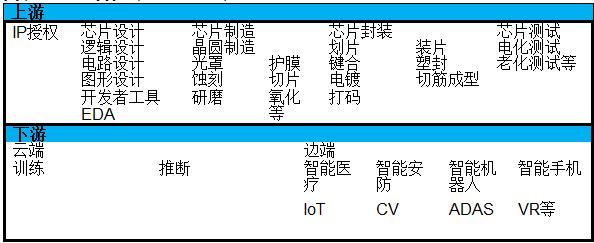Analysis of the Current Status and Development Trends of the AI Chip Market
-
Analysis of the Current Status and Development Trends of the AI Chip Market
AI chips, as the computational foundation for large models and AI applications, are becoming increasingly important. AI chips are also known as AI accelerators or computing cards, which are modules specifically designed to handle large-scale computational tasks in AI applications (non-computational tasks are still managed by CPUs). Currently, AI chips are mainly categorized into GPUs, FPGAs, and ASICs. Many AI data processing tasks involve matrix multiplication and addition. GPUs, which work in parallel, provide a cost-effective solution but come with higher power consumption. FPGAs, equipped with built-in DSP modules and local memory, are more energy-efficient but generally more expensive. In terms of technical approaches, the first AI chips in the market included various combinations of off-the-shelf CPUs, GPUs, FPGAs, and DSPs. While new designs are being developed by companies such as Intel, Google, NVIDIA, Qualcomm, and IBM, at least one CPU is required to control these systems. However, when processing streaming data in parallel, various types of coprocessors are needed.
China's top ten AI chip companies include Huawei HiSilicon, Unisoc, Bitmain, Alibaba Cloud, Cambricon, Horizon Robotics, Vimicro, GigaDevice, MGI Tech, and Goodix. These companies have achieved significant milestones in the AI chip field, making important contributions to the development of China's AI industry.
With the continuous advancement of AI technology and the expansion of application scenarios, the demand for AI chips will continue to grow. In the future, China's top AI chip companies will focus more on advanced technologies such as deep learning and edge computing, developing more powerful and highly integrated AI chips to meet the growing demands of various industries.
The upstream of the AI chip industry chain primarily involves chip design, which can be further divided into three categories based on business models: IP design, chip design foundry, and chip design. Most companies in this space are IC design firms.
AI chips are the "brains" of artificial intelligence. The main types of AI chips currently include CPUs, GPUs (Graphics Processing Units), FPGAs (Field-Programmable Gate Arrays), DSPs, ASICs (Application-Specific Integrated Circuits for neural network algorithms), and brain-inspired chips. ASICs are expected to replace general-purpose chips as the mainstream AI chips in the coming years.
The downstream of the AI chip industry chain mainly consists of system integrators and application companies, such as AI solution providers. The most popular application areas include autonomous driving, smartphones, robotics, and security.
Industry Chain Structure Analysis
Chart: Analysis of the AI Chip Industry Chain Structure

Data Source: China Research Puhua Industry Research Institute
AI chips are the core of the information industry and a key driver of the new wave of technological revolution and industrial transformation. Based on registered capital, the AI chip industry can be divided into three competitive tiers. Companies with registered capital exceeding 10 billion yuan include Huawei and Horizon Robotics; those with registered capital between 1 and 10 billion yuan include Cambricon, AISpeech, and Enflame; and the remaining companies have registered capital below 1 billion yuan.
The AI chip industry is capital-intensive and technology-intensive, with high technical barriers. As a result, China's AI chip companies are concentrated in economically developed and talent-rich regions such as Beijing, Shenzhen, and Shanghai.
AI Chip Industry Landscape
In the AI chip sector, foreign chip giants dominate the majority of the market share. Globally, major players in AI chip development include Intel, NVIDIA, Qualcomm, and Google.
Facing the pressure of foreign monopolies, domestic internet companies and AI chip startups are actively entering the market.
Under the dual impetus of policy and demand, Chinese AI chip manufacturers are rapidly catching up.
Domestic AI chips, represented by Cambricon's Siyuan series and Huawei's Ascend series, have reached relatively high performance levels. Products from Cambricon and Huawei Ascend are expected to accelerate domestic substitution and usher in a period of rapid growth.
Amid the AI wave, industries such as cloud computing, smart vehicles, and intelligent robotics are developing rapidly, driving increasing demand for AI chips. The AI chip market is poised for sustained expansion.
The market size is projected to grow tenfold over the next decade.
With the expanding deployment of deep learning and artificial intelligence, demand for AI chips is rising. The market size is expected to increase tenfold in the next 10 years.
Forecasts indicate that China's AI chip market will reach ¥178 billion by 2025, nearly doubling from 2022. The compound annual growth rate (CAGR) for China's AI chip market from 2021 to 2025 is projected at 42.9%, outpacing the global market growth rate of 32.1% during the same period.
The AI chip industry research report aims to analyze future policy directions and regulatory trends from a national economic and industrial development perspective, uncover the market potential of the AI chip sector, and provide a comprehensive overview of industry scale, structure, regional distribution, competition, and profitability based on in-depth studies of key segments. This will clarify development pathways.
